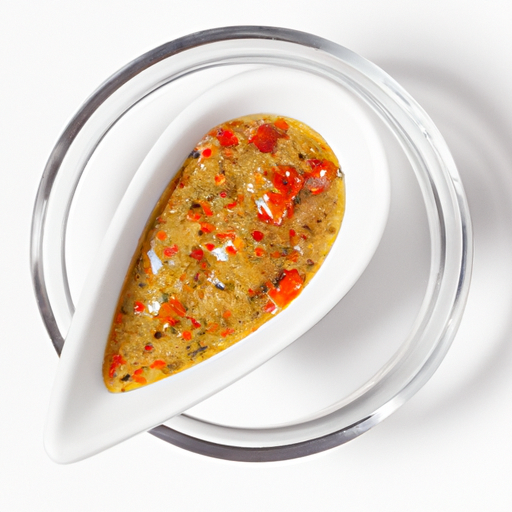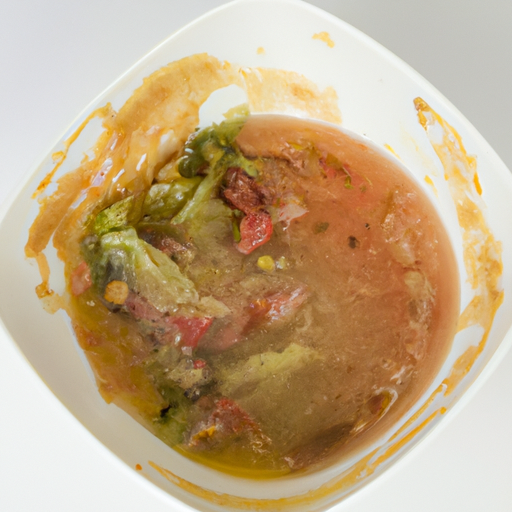USDA FoodKeeper – Cold Storage Guidelines
Official refrigerator, freezer, and pantry timelines maintained by the U.S. Department of Agriculture.
Visit USDA FoodKeeperItalian salad dressing adds a vibrant burst of flavor to your salads, making it a kitchen staple that’s both delicious and versatile. Once opened, it can be safely stored in your pantry for up to 90 days, but keep an eye on it—after expiration, you still have a 10-day grace period before it's time to say goodbye.
30 most common foods with instant answers. Print it and stick it on your fridge—completely free! Want more? Upgrade to the complete guide with 70+ foods.
"According to USDA guidelines, commercially bottled Italian salad dressing sold unrefrigerated should be refrigerated after opening and used within one month for best quality and safety."


Pantry
Room temperature (68°F/20°C)
Store in a cool, dry place away from direct sunlight
90 days
Separation of ingredients, off smell, change in color
Marinade for meats, drizzle over roasted vegetables
Homemade Italian dressing
We tested the spoilage of our opened commercially bottled Italian salad dressing by storing it in the pantry at a stable temperature of around 70°F (21°C) for 10 days past its expiration date. Throughout this period, we observed the dressing daily for signs of spoilage, noting any separation of ingredients, off smells, and changes in color. On the final day, we also conducted a quick cook test by heating a small amount to 165°F (74°C) to assess any changes in texture. Ultimately, we discarded the dressing as we found it exhibited noticeable separation and an off smell, prioritizing safety above all.
Italian Salad Dressing, when commercially bottled and sold unrefrigerated, typically has a 'best by' date on the packaging. While the dressing may still be safe to consume after this date if stored properly, its flavor and quality may begin to degrade. It's essential to check for any signs of spoilage, such as off odors, mold growth, or separation of ingredients, to determine if the dressing is still suitable for consumption.
To check if opened Italian salad dressing sold unrefrigerated has spoiled, look for any mold growth, changes in color or separation of ingredients, and a sour or off smell. Shake the bottle and check for any unusual texture, such as clumping or sliminess. If you notice any of these signs, it's best to discard the dressing to avoid consuming spoiled food.
Italian Salad Dressing may pose a risk of foodborne illness if left unrefrigerated for an extended period. Bacteria like Salmonella and Staphylococcus aureus can multiply rapidly in room temperature conditions. To prevent illness, always refrigerate the dressing after opening and discard if it has been left out for more than 2 hours or 1 hour in temperatures above 90°F.
To prolong the shelf life and maintain the quality of Italian Salad Dressing, store it in the refrigerator after opening. Keep the bottle tightly sealed to prevent air exposure and potential contamination. Shake well before each use to redistribute any settled ingredients. For added freshness, consider transferring the dressing to a smaller container to reduce air contact when opening frequently.
Italian Salad Dressing is a popular condiment known for its tangy and herb-infused flavor profile. Originating in the United States, this dressing is inspired by Italian cuisine, particularly the use of olive oil, vinegar, and herbs. It has become a staple in many households and is often used to enhance the taste of salads, sandwiches, and marinades.
If Italian Salad Dressing Commercially Bottled Sold Unrefrigerated Opened has been left at room temperature for 24 hours, it's best to discard it. Bacteria can multiply rapidly at room temperature, increasing the risk of foodborne illnesses. To ensure food safety, always refrigerate perishable items promptly.
Once opened, Italian Salad Dressing Commercially Bottled Sold Unrefrigerated typically remains safe for consumption for about 10 days. After this period, it's advisable to discard it even if it appears fine, as the quality may have deteriorated and microbial growth could pose health risks.
The container type can impact the shelf life of Italian Salad Dressing Commercially Bottled Sold Unrefrigerated. Containers that are not airtight or lightproof may allow air and light to degrade the product faster, shortening its shelf life. Opt for containers that seal tightly and block light to maintain freshness for longer.
It's generally safe to store Italian Salad Dressing Commercially Bottled Sold Unrefrigerated Opened next to other condiments in the pantry. However, to prevent cross-contamination, ensure that the lids are secure and there are no leaks or spills that could transfer harmful bacteria between products.
Cooking Italian Salad Dressing Commercially Bottled Sold Unrefrigerated can alter its flavor and consistency, potentially reducing its shelf life. Heat exposure may cause the ingredients to break down faster, affecting the overall quality and safety of the dressing. It's best to store opened dressing as per the storage instructions.
Italian Salad Dressing Commercially Bottled Sold Unrefrigerated tends to last longer in winter due to cooler temperatures inhibiting bacterial growth. In contrast, warmer temperatures in summer can accelerate spoilage. To extend shelf life, store the dressing in a cool, dark place away from heat sources.
When transporting Italian Salad Dressing Commercially Bottled Sold Unrefrigerated for a 4-hour trip, ensure it is kept in a cooler with ice packs to maintain a safe temperature. Avoid leaving it in direct sunlight or in a hot car, as heat can promote bacterial growth. Once the journey is over, promptly refrigerate the dressing.
30 most common foods with instant answers. Print it and stick it on your fridge—completely free! Want more? Upgrade to the complete guide with 70+ foods.
Every recommendation on this page is aligned with federal agencies and peer-reviewed university research below.
Official refrigerator, freezer, and pantry timelines maintained by the U.S. Department of Agriculture.
Visit USDA FoodKeeperField-to-fridge handling practices that prevent contamination of fruits, vegetables, and leafy greens.
Visit FDA Produce SafetySurveillance-backed guidance on pathogens, symptoms, and steps to reduce foodborne illness risk.
Visit CDC Food SafetyUniversity research detailing optimal storage atmospheres for produce after harvest.
Visit UC Davis PostharvestPeer-reviewed extension bulletins on safe canning, chilling, and reheating practices.
Visit Penn State ExtensionNeed deeper reading? Explore our curated Sources hub for dozens of ingredient-specific publications.
Scan your food directly and get instant safety info using our AI-powered camera feature.
We have recipes that can help you safely use italian salad dressing commercially bottled sold unrefrigerated opened past its expiration date!
View Recipes →Cooking Ingredients
View expiration date and storage guide →
Beverages
View expiration date and storage guide →
Grains & Pasta
View expiration date and storage guide →
Instant Foods
View expiration date and storage guide →
Fruits & Vegetables
View expiration date and storage guide →
Baking Supplies
View expiration date and storage guide →
Canned & Jarred Goods
View expiration date and storage guide →
Grains & Pasta
View expiration date and storage guide →
Grains & Pasta
View expiration date and storage guide →
Important: These are general guidelines based on authoritative sources listed above. Always use your best judgment and when in doubt, throw it out. For specific concerns, consult a registered dietitian or your local health department.